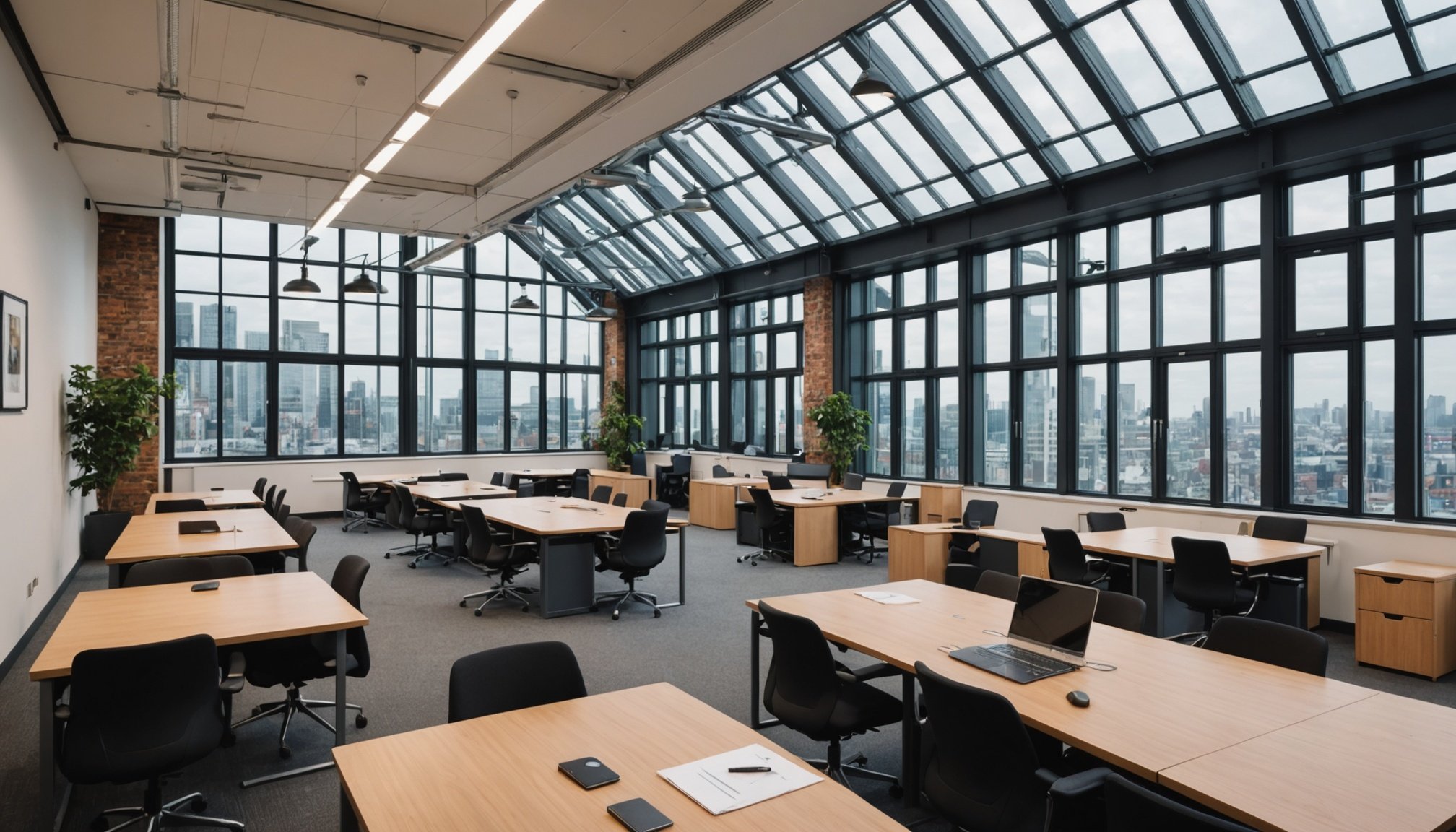Financial benefits of converting UK commercial properties
Transitioning commercial properties into live/work spaces can lead to substantial financial returns for investors. Market analysis highlights a growing trend towards hybrid work environments, offering lucrative opportunities. Conversion taps into this shift, meeting the rising demand for flexible, urban living while yielding rewarding investment strategies.
Market Trends Supporting Conversion
The demand for residential properties that accommodate both lifestyle and professional needs is escalating. This trend provides a fertile ground for investments that ensure both increased rental income and long-term property value. As more individuals gravitate towards city centers with adaptable living spaces, property owners can capitalize on this preference by enhancing their investment strategies.
In the same genre : Key financial considerations for uk homeowners setting up electric vehicle charging stations
Cost Analysis and Rental Income
A comprehensive cost analysis versus potential rental income is pivotal. Conversions often entail initial expenses, yet they promise significant returns due to premium rental rates such properties command. Understanding these dynamics is a crucial strategy for maximising financial returns.
Long-term Value Appreciation
Investing in property conversions can enhance long-term value appreciation, a significant aspect impacting Return on Investment (ROI). As the market stabilizes and grows, these properties are poised for sustained growth, further cementing the financial benefits for astute investors.
Also read : Harnessing profitable opportunities: the benefits of property investment in uk enterprise zones
Case studies of successful conversions
Exploring success stories of property conversions offers valuable insights into effective strategies. An analysis of high-profile conversions in the UK showcases real estate examples that have notably transformed urban landscapes. Each case exemplifies how strategic planning and market analysis can lead to rewarding financial outcomes.
Incorporating adaptable living solutions, these projects align with evolving demand trends in residential preferences. Successful investment strategies have emerged from understanding the market’s pulse, tapping into the shift towards hybrid living spaces. These projects highlight the importance of monitoring market trends and effectively responding to changing residential needs.
Financial outcomes from these conversions vary, but common themes include increased property value and elevated rental income. Lessons learned underline the value of thorough cost analysis and the impact on long-term value appreciation, affecting overall ROI positively. Key factors contributing to success often involve compliance with relevant regulations and innovative use of available spaces, showcasing the adaptability of these properties.
These case studies demonstrate the immense potential in property conversion, offering a blueprint for future investors aiming to capitalise on current trends while also mitigating risks associated with such transitions. Understanding these elements is critical for successful project execution.
Regulations and best practices for conversion
Navigating the arena of building regulations and ensuring compliance is a pivotal element for successful property conversion in the UK. Detailed understanding of the existing legislation is crucial for potential investors and developers. Compliance with the regulations not only facilitates smooth conversion processes but also safeguards against potential legal complications.
Overview of relevant legislation
Current UK regulations necessitate adherence to specific standards concerning safety, accessibility, and environmental impact. These include the Building Regulations 2010, which outline various technical standards for construction and conversion projects. Understanding the constraints and allowances within these regulations can significantly impact project planning and execution.
Steps for ensuring compliance
Ensuring compliance requires a diligent approach, including thorough reviews of local guidelines and collaboration with expert professionals. Engaging with architects and surveyors, familiar with conversion standards, can streamline the process. Consultation with local authorities to secure necessary permits is another critical step.
Best practices for maximizing space and functionality
When embarking on a property conversion, strategic planning is essential to maximise usefulness. Incorporate design elements that enhance flexibility and function, such as modular spaces that can easily transform as needs evolve. Consideration of natural light, ventilation, and sustainable materials can elevate a property’s appeal, catering to contemporary residential preferences.
Testimonials from real estate professionals
Exploring expert insights from seasoned real estate professionals provides a nuanced understanding of property conversions. These testimonials offer practical advice and strategic perspectives, vital for investors and developers aiming to succeed in the rapidly evolving real estate market.
Success stories from developers
Developers have shared significant success stories that highlight the transformative potential of strategic property conversion. For instance, developments in central London have shown how integrating innovative design and functionality can significantly boost the market appeal and financial returns of converted spaces. These stories underscore the importance of aligning development projects with current residential preferences and market demands.
Insights from investors
Investors offer valuable insights into the economic facets of property conversions. They emphasise the importance of thorough market analysis and financial modeling to anticipate potential profit calculations and avoid common pitfalls in investment strategies. By leveraging detailed analysis, investors can better forecast ROI, balancing costs with anticipated long-term gains.
Perspectives from regulatory authorities
Regulatory authorities provide crucial industry opinions on compliance and best practices. Emphasising the need for adherence to building regulations, these insights help ensure smooth project execution. By maintaining compliance, developers can mitigate legal risks and focus on maximizing space functionality and profitability.
Investment calculations and financial modeling
Investment strategies in property conversions require thorough financial analysis to maximise financial returns. The importance of evaluating key metrics before conversion cannot be overstated, as they significantly influence decision-making. This involves scrutinising location, property value, market demand, and potential rental income. By doing so, investors can identify trends and opportunities that align with their goals.
Creating a comprehensive financial model is a critical step in ensuring profitable conversions. A detailed model incorporates projected expenses, anticipated cash flows, and timeline for return on investment. This careful planning aids in understanding the financial landscape of a project, helping to mitigate risks and ensure investment strategies are sound.
However, common pitfalls in profit calculations can derail even the most promising projects. One such misstep is underestimating conversion costs or overestimating rental income. Due diligence is vital, including factoring in unexpected expenses and accounting for market fluctuations. A well-rounded financial analysis not only anticipates potential challenges but also leverages strategic planning and market insights. Investors who successfully navigate these elements can significantly enhance their portfolio through calculated property conversions, ensuring a robust approach to financial modeling.
Market trends and demands in live/work environments
In today’s evolving landscape, understanding current market analysis and emerging demand trends is crucial. These trends heavily influence how residential preferences shape the property industry.
Increase in hybrid work culture
The shift towards a hybrid work culture highlights the growing need for adaptable spaces. Many are drawn to residences that double as workspaces, balancing professional and personal life from the comfort of home. This change mandates properties that cater to flexible living and working conditions.
Shift towards urban living
The demand trends show a clear move towards urban living. People are increasingly seeking homes closer to city amenities while maintaining the convenience of working remotely. This shift has paved the way for developers and investors to focus on properties that offer easy access to urban facilities while providing a quiet, productive work environment.
Rising demand for flexible spaces
Residential preferences increasingly lean towards flexible spaces that accommodate dynamic lifestyles. Properties that adapt to different uses throughout the day have become valuable investments. These spaces meet modern needs, enabling owners to maximise both living comfort and efficiency. This adaptability is key in addressing the dual demands of modern urban living and hybrid work environments.










